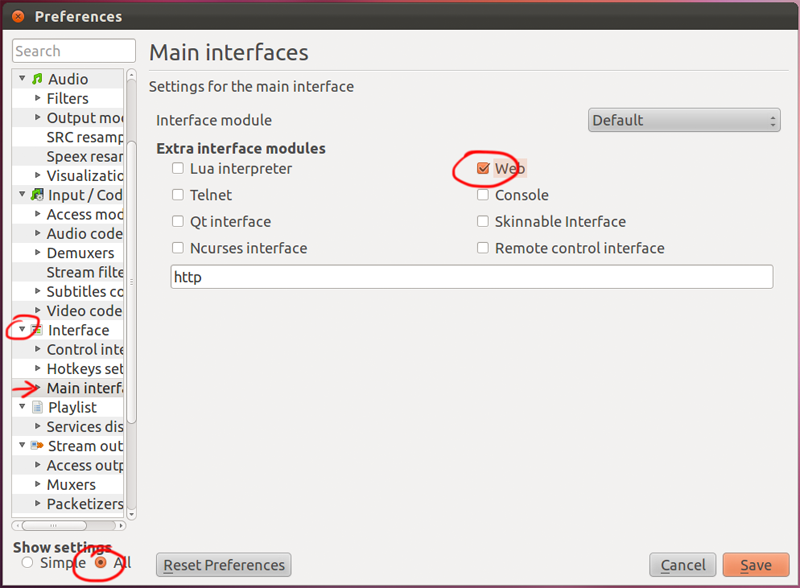iPhone / iPad
iPhone / iPad
Mac OS
These instructions are based on VLC 2.0. If you have VLC 2.1 or later, then please click here.
Linux users are assumed to be super techie, so these instructions are a little less specific! They use screenshots from the windows build, though the actual screens in linux are extremely similar.

Once you have enabled the http interface, press re-scan on your iPhone remote.
If you see a traffic cone beside the computer you are trying to control, then you can skip this step.
If you are using a recent version of VLC then you will see a cone with a red X through it. This means you need to give your iPhone permission to access VLC.
VLC in the latest versions uses a file called '.hosts' to define which computers can access the VLC remote player. You need to open this file and edit it:
you will need to edit the hosts file:
the file is in /usr/share/vlc/lua/http/.hosts
To edit this file from the command line (making sure I have permission to save changes), I use
cd /usr/share/vlc/lua/http/ sudo gedit .hosts |
# # localhost # link-local addresses # private addresses # The world (uncommenting these 2 lines is not quite safe) |
if you want to access VLC from your local network, then you will need to remove the # signs in the 'private addresses' area so that it looks like this
# # localhost # link-local addresses # private addresses # The world (uncommenting these 2 lines is not quite safe) |
if you want to access VLC from the entire world, then remove the # in the 'The World' section. As VLC says, this is 'not quite safe' as you allow the whole world to control your VLC player.
# # localhost # link-local addresses # private addresses # The world (uncommenting these 2 lines is not quite safe) |
You'll need to make sure that port 8080 (assumign you used the default port) is open for your local network so that VLC Remote can 'talk' to VLC.
By now, you should be able to see your computer in the VLC Remotes page under 'Found Computers'. If VLC is running on your computer, then you should see a Traffic cone next to the computer entry.
You can then select that computer and control it remotely.
If you can't connect, try the troubleshooting page.